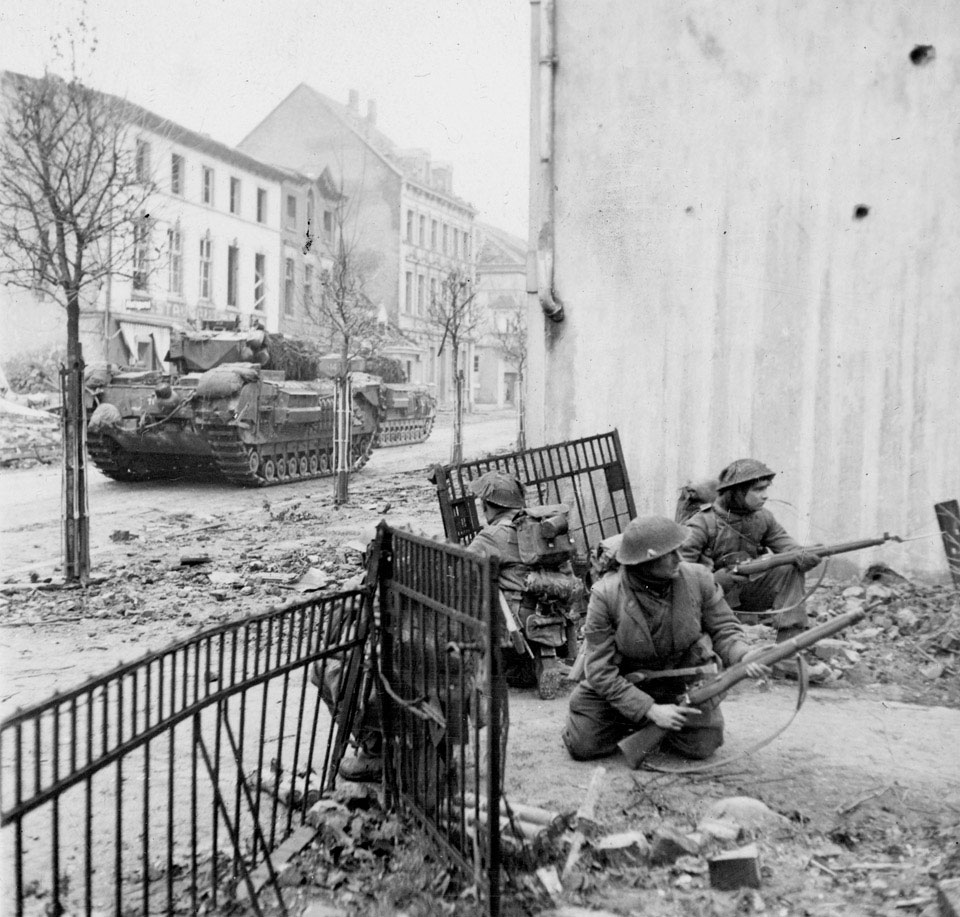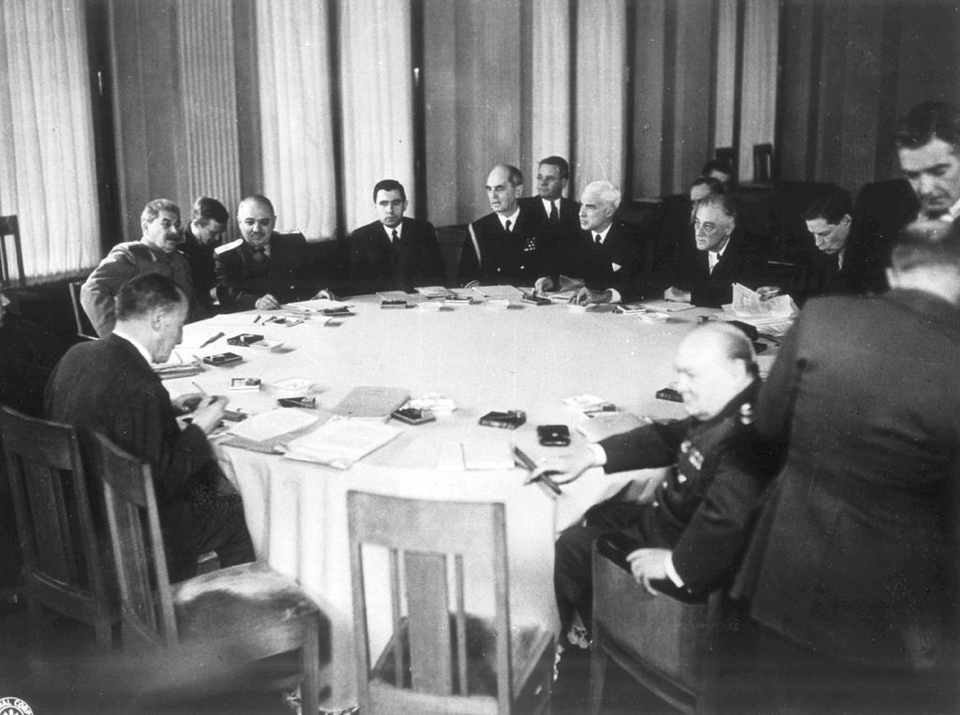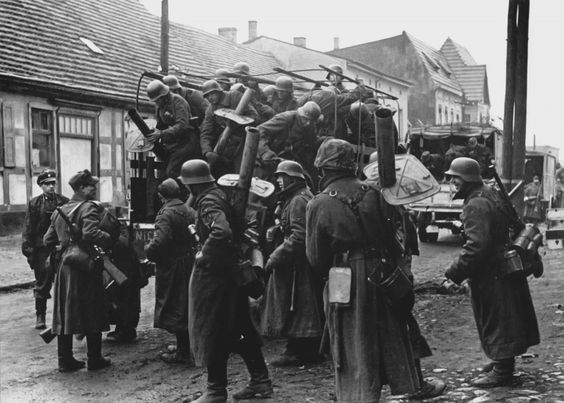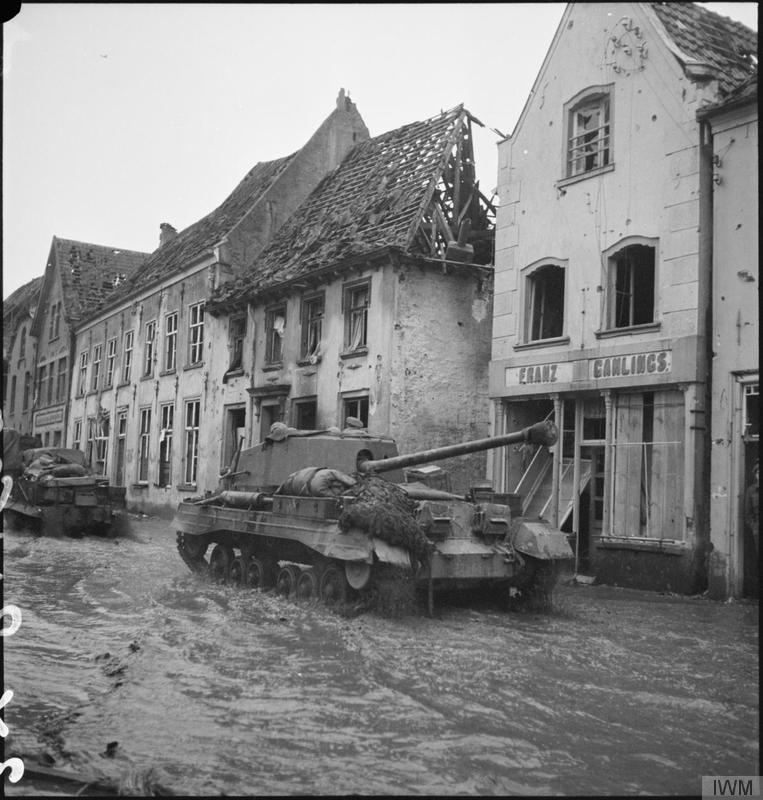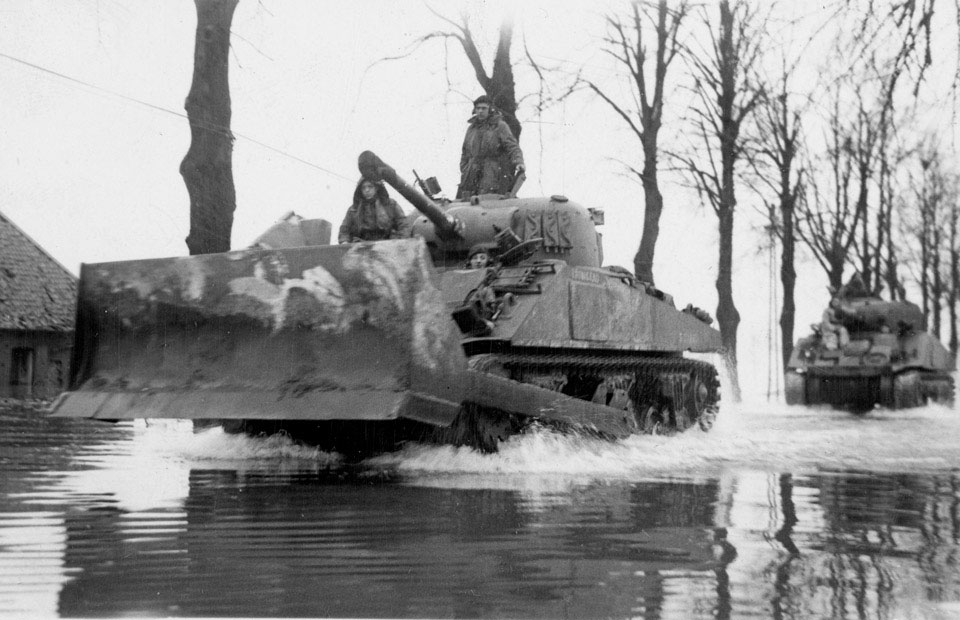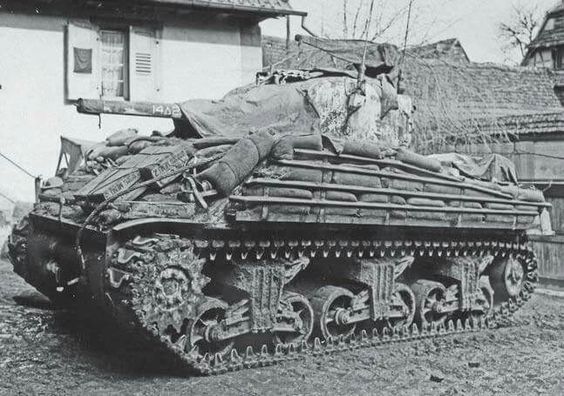Air Operations, CBI
BURMA- 56 XX Bomber Command B-29s and a number of 7th Heavy Bomb Group B-24s attack stores in Rangoon.
- 11 10th Air Force B-25s attack troops and supplies at Loilem.
- More than 100 10th Air Force fighter-bombers attack troops, artillery positions, ammunition dumps, supplies, and targets of opportunity at 10 locations.
- 22 P-47s support Allied ground forces in the Mongmit area.
- A 459th Fighter Squadron P-38 downs a D4Y 'Judy' dive bomber near Rangoon at 1230 hours.
- 308th Heavy Bomb Group B-24s attack shipping in the South China Sea.
- 17 341st Medium Bomb Group B-25s attack a locomotive works at Hsuchang and rail facilities at Lohochai and Sinyang.
- 23 14th Air Force P-47s attack the airfield at Hankow.
- 8 fighter-bombers attack the Anyang airfield and rail targets of opportunity.
Air Operations, Europe
Record raids are launched against Essen and Dortmund as 1,079 and 1,108 heavy bombers raid the cities with 5,000 and 5,487 tons of bombs, respectively.
US 8th AIR FORCEGERMANY:
- Unable to locate their primary target, 124 2nd Air Division B-24s attack the oil plant at Dulmen.
GERMANY:
- 97 9th Air Division bombers attack marshalling yards at Bingen and Modrath.
ITALY:
- XXII TAC P-47s attack supply dumps, rail lines, and bridges.
- During the night, XXII TAC A-20s and A-26s attack targets in Brenner Pass and the Po River valley.
Air Operations, Formosa
- V Fighter Command P-38s and P-47s sweep the island.
- An 18th Fighter Group P-38 downs a Ki-45 'Nick' fighter near the Okayama airfield at 1410 hours.
- During the night, 63rd Heavy Bomb Squadron SB-24s attack several airfields.
Air Operations, Philippines
- 25 494th Heavy Bomb Group B-24s based at the Angaur airfield attack Corregidor.
- FEAF B-24s attack Corregidor throughout the day and mount a light attack against Bago.
- B-24s, A-20s, and V Fighter Command fighter-bombers attack military targets across the Bataan Peninsula throughout the day.
- Fighter-bombers support US 6th Army ground forces on Luzon.
- 348th Fighter Group P-47s strafe barges carrying Japanese Army ground troops from Manila to Bataan and Corregidor.
Air Operations, Volcano Islands
- A total of 21 VII Bomber Command B-24s attack Iwo Jima in two separate waves.
- During the night, 10 VII Bomber Command B-24s conduct snooper raids against Iwo Jima.
Diplomatic Relations
The Yalta Conference ends. Stalin, Churchill and Roosevelt, assisted by their Foreign Ministers, Molotov, Eden and Stettinius, have reached agreement on future war strategy and on the political order of the post-war world. The USSR confirms its adhesion to the United Nations, an idea very dear to Roosevelt, and agrees to take part in the war against Japan when the war in Europe is over, expected in July, - this request is also made by Roosevelt, though the American military chiefs had warned against it on account of its political implications. In exchange, the Soviet Union is to be given important concessions in the Far East, Dairen, Port Arthur, part of Sakhalin and the Kurils.
Churchill has opposed what he considers to be dangerous and unjustified surrenders, particularly with regard to the Soviet sphere of influence in Europe, but he has had to yield to the wishes of his more powerful ally.
The Yalta Conference opens in the Crimea, attended by Churchill, Stalin and Roosevelt. Stalin demands a strong, pro-communist government in Poland to guarantee the future security of the USSR. As the Red Army controls most of Eastern Europe, the British and Americans have little choice but to agree. The conference also confirms the decision to form a United Nations organization. Also agreed is the future division of Germany. Roosevelt's decision that the capture of Berlin is not a prime US objective will ensure that the Red Army will be the first to reach the city.
[Eastern Front
Moscow announces the breaching of the German line on the Oder northwest of Breslau by the 1st Ukraine Front and the capture of Lüben (Lubin), Haynau (Chajnow), Leignitz (Legnica), Neumarkt (Sroda Slaska) and Kanth (Katy Wroklavskie).
The advance southeast of Breslau means a threat to the chief city of Silesia, while the Russians are now seen to be threatening Dresden also, 75 miles further west. In the northeast sector the Russians take Deutsch-Krone (Walcz). Other Russian forces are preparing to wipe out the German forces at Schneidemühl (Pila) and Poznan.
45 more blocks of buildings in Budapest have fallen into the hands of the Russian forces.
Konev's troops begin to break out of their bridgehead over the Oder near Steinau and attack west and north threatening Glogau.
EAST PRUSSIAThe Soviet 48th Army captures Wormditt.
GERMANYThe 1st Ukrainian Front forces the German 17th Army back from the Oder River to the Neisse River. Glogau and 18,000 German troops have now been encircled.
HUNGARYThe garrison of Buda attempts to break out, but the 28,000 troops suffer greatly at the hands of Soviet firepower.[MORE]
[![]()
![]() |
| ![]()
![]() ]
]
Germany, Home Front
The entire gold reserves, about 100 tons, are transported from Berlin to a salt mine near Eisenach.
[Pacific
- Vice-Adm George D. Murray, US Navy, Commander Air Forces, Pacific Fleet, releases figures that demonstrate US air superiority over the Pacific theater. From June 11-October 30, 1944, Pacific Fleet carrier aircraft destroyed 2,472 Japanese aircraft in aerial combat and lost 123 aircraft. The ratio of US kills to losses is about 20 to 1.
- The US landing craft LST-577 is damaged by a submarine torpedo east of the Philippine Islands and later sunk by US forces.
- The US submarine Batfish (SS-310) sinks her second Japanese submarine RO-112 of three in a four-day stretch also in the Philippine Islands area.
Philippines
On Luzon there is fighting south of Manila, where the 11th Div, now part of the XIV Corps, US 6th Army, captures a suburb of the city and part of Nichols airfield. In the I Corps sector, in the north, the 25th Inf Div advances from San Isidro in the direction of Puncan. The XI Corps makes little progress in the Zigzag Pass area.
[Western Front
The British XXX Corps, Canadian 1st Army, overcomes German resistance in the area of Cleve and Materborn and 2 important road junctions of Hekkens and Gennep.
The VIII Corps, US 3rd Army, continues its offensive in the Prüm sector; Prüm falls to units of the 90th Div. In the XII Corps sector the advance proceeds between the fortifications of the Siegfried Line in the Wallendorf bridgehead. In the vicinity of Metz, in the meantime, the 10th Arm Div, XX Corps, has been completing the re-grouping of its units.
[Images from February 11, 1945
|
|
|
|
|
|
|
|
